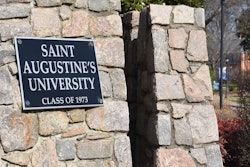Forthcoming Mellon Foundation study documents activities that lead to African American success on standardized tests
Only about 5,000 of the roughly 224,000 students who score 1200 or
better on the SAT are African American. And until now, very little has
been known about them and their educational experiences.
A forthcoming study by the Mellon Foundation, in conjunction with
the Urban Institute, begins the process of finding out more about
African American students who score well on these tests. The study will
be an eye-opener for those who believe high-scoring Black students are
identical, experientially, to their White peers.
It finds, for example, that high-scoring African American students
have fewer advantages than their White counterparts. They are also more
likely to come from families with lower incomes and with fewer college
degrees than Whites with similar scores. And although the biggest
concentration of Blacks with high scores attend school in the close-in
suburbs of large cities, in general high-scoring Black students are
much more likely than their White peers to attend school in central
cities –where educational opportunities are often more limited than in
the suburbs.
The study “makes a point that has really been lost,” says Dr. Linda
Darling-Hammond, professor at Stanford University’s School of Education.
“Black kids who score well do so against greater odds than what
White students have to face,” she says. “There’s been this idea in the
press that Black kids have equal opportunities, don’t measure up, and
still want extra opportunities in the form of affirmative action. But
Black kids are achieving against the odds.”
This means, according to the study, that “those charged with
selecting entering classes for prestigious colleges and universities
need to look beyond the numbers — students’ SAT scores -to understand
the challenges that they may have faced in becoming top performers.”
The study’s author, Stephanie Bell-Rose of the Mellon Foundation,
says she is hopeful that selective colleges will take these findings
seriously.
“It’s not enough to intensify recruitment,” she says, adding that
what that usually does is reshuffle the same students. “Rarely does
intensified recruitment mean the pool of students has expanded.”
One of the things she says highly selective colleges should do is
to communicate “exactly what is needed to compete” and to develop
programs to deepen the pool of qualified African American applicants.
“The college admissions game is changing,” she says. “We now have more concentrated resources for college preparation.”
Bell-Rose is referring to the increased use of summer academic
programs, Saturday academies, and other academic enrichment
opportunities as well as the increasing use of early admissions. Most
of these are used disproportionately by those who are already in a good
position to compete for spots at the more competitive colleges — that
is, those who tend to be affluent and White.
“This is cause for concern about the preparation of all minority kids — not just Black kids,” Bell-Rose says.
The study used data collected by The College Board, which
administers the SAT. The College Board data is very extensive, deriving
from surveys filled out by every student taking the SAT. Data on
African American students who are otherwise academically accomplished
is not available in the same kind of detail. Scores on the SAT are
widely used by college admissions offices as a way to sort through the
college admissions process, although some colleges depend on them more
than others.
One of the study’s major findings was that all high performers,
Black and White, take rigorous courses. Most take calculus, and even
more take honors English. This tallies with previous research which
indicates that when students take more rigorous coursework they tend to
do better on the SAT and on the ACT — another standardized test used
primarily in the South and the Midwest.
This is especially true for Black students, says Darling-Hammond,
because “there is a body of research that [African American] kids
continue to be tracked out of these courses, even when they have high
grades and test scores. That’s a function of how school systems
allocate scarce resources, how counselors see these kids, and how
aggressive parents are in demanding that their children have access to
these courses.”
The study also found that although the vast majority of Blacks with
high test scores attend public school they represent only 4 percent of
the African American males and 3 percent of African American females
attending public schools.
In contrast, there is a correlation between attending private and
Catholic school and scoring high on the SAT. In private school, 16
percent of African American boys and 21 percent of the girls score 1200
or more. In Catholic school, 7 percent of male Blacks and 4 percent of
female Blacks achieve these scores.
Part of the reason offered by the study for that discrepancy is
that Catholic and private schools tend to require all students to take
a rigorous college-preparatory curriculum, while many public schools do
not.
A large part of the “beneficial effect is through student course-taking and extracurricular activities,” the study says.
“It’s important, but not surprising,” says Dr. Michael T. Nettles,
professor of education at the University of Michigan and head of the
Frederick D. Patterson Research Institute of The College Fund/UNCF,
about the gap between public and private school students.
Even aside from the course requirements, Nettles says, private school students are often more focused on academics.
“When you look at television watching, you get a reduction in
[private] schools,” he notes, “also more reading by the students.”
The study found significant differences between African American
and White high scorers in terms of what they did outside the classroom.
Blacks with high scores work fewer part-time jobs than Whites with high
scores, and generally participate less in extracurricular activities —
with the exception of what the study calls “intellectually stimulating”
activities such as honor society, computer clubs, and instrumental
music classes. Lower scoring Black students spent more time working and
participating in junior ROTC.
Black students who score high on the SAT tend to do less well than
their White counterparts in terms of their grades and class standing in
high school — a finding that Bell-Rose finds puzzling. Although she
has no explanation for it, she says it corresponds to the fact Blacks
with high scores do somewhat less well in terms of grades and class
standing in college as well.
This phenomenon has been the subject of other research, including
that done by Nettles, who is currently working on a study for Mellon on
why African American students drop out of college at higher rates than
White students.
Another finding of the Mellon study is that high-scoring African
American students — particularly girls — have very high aspirations
for their education. For example, 32 percent of Black girls who score
above 1300 on the SAT say they will aim for a Ph.D., compared to only
about one-fifth of African American boys and White students.
African Americans with high scores also apply to slightly more
competitive schools than their White counterparts, but keep to a fairly
narrow range of schools. Only about sixty universities received the SAT
scores of one hundred or more African American students with high
scores. For the male African American with high scores, of the most
popular schools, twenty-two were private schools, seventeen public
universities, six were Ivy League, and five were historically Black
colleges and universities. For females, the top schools included
twenty-six private universities, thirteen public universities, six Ivy
League schools, and five historically Black colleges and universities.
The study did not follow the students to find out where they attended college but only where they sent their SAT scores.
Because the pool of high-scoring applicants is so shallow, the
foundation report says, “colleges and universities have a clear stake
in improving Blacks’ pre-college preparation.”
RELATED ARTICLE: Key Findings from the Mellon Foundation Study
* African American students who score high on the SAT come
disproportionately from the South, from private and Catholic schools,
from the suburbs, and from families with less income than their White
counterparts.
* African American students who score high on the SAT tend not to
participate in non-academic extra-curricular activities — except for
the boys, who are active in sports — and tend not to work part-time
jobs as much as their White counterparts. They are, however, engaged in
what the study calls “intellectually stimulating” activities, such as
participating in the honor society, computer club, journalism, and
instrumental music.
* African American students who score high on the SAT take rigorous
course work. Most take calculus and even more take honors English.
* On average, African American students who score high on the SAT
live in neighborhoods with higher percentages of poor children, single
parent households, adults without college degrees, high school
dropouts, and non-English speakers than their White counterparts.
COPYRIGHT 1998 Cox, Matthews & Associates
© Copyright 2005 by DiverseEducation.com















